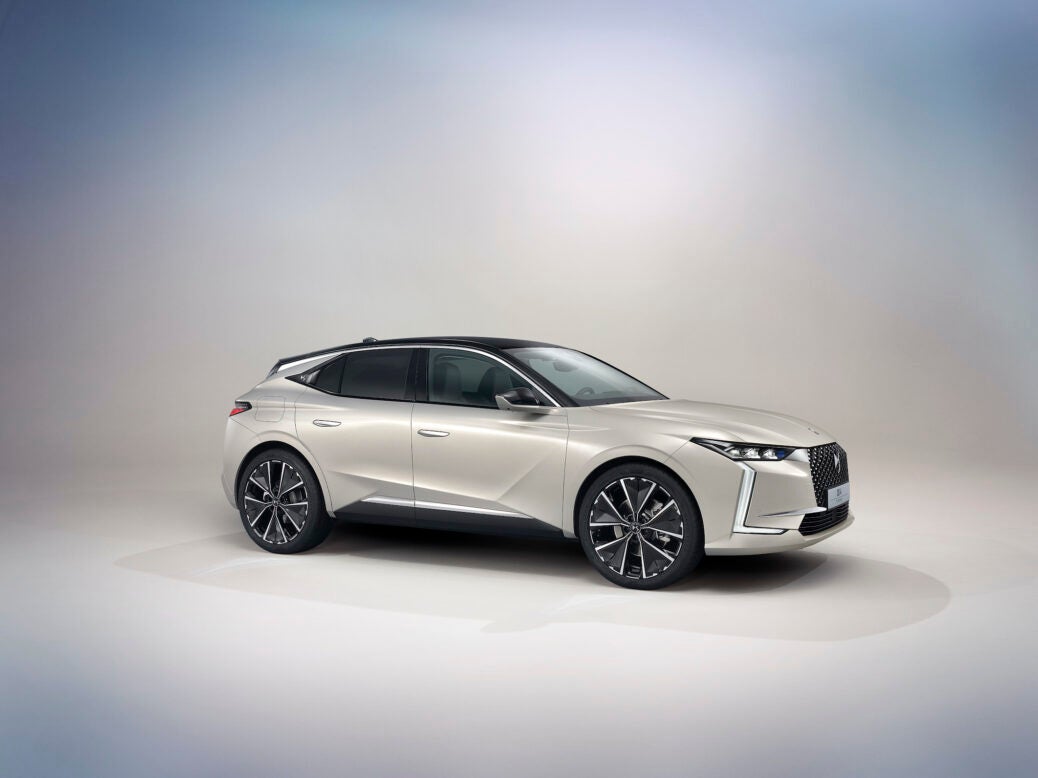
With only about 150 cars sold in China during January and February, 2022 is at least looking better for DS than last year (456 in total). In that context, things are good in the European region although the majority of sales are in France, where exactly 3,200 cars were delivered in the year’s first two months.
Stellantis insists that this and all of its other brands have a decade to prove themselves, although what equates to success hasn’t been publicly defined.
Certainly the models which keep coming are ever better, the newest 4 being a case in point. The only real issue is the same one which has been with DS since its creation: cracking the premium market as a start-up brand.
Outside France, getting the brand onto buyers’ consideration lists is proving to be a tough challenge. The proof of that is just 2,069 vehicles having been delivered to customers in Europe’s largest market during 2021.
Will Germans respond more positively to the arrival of the new 4? They certainly ought to as this 4.4 m long crossover has fantastic looks. Already, it’s the brand’s top seller in France, having beaten the 7 and 3 in February.
As Rüsselsheim had already been retooled to make the then next Opel and Vauxhall Astra, building the second generation 4 there (some three years after the first generation was discontinued) was a relatively low cost, low risk move.
As multiple locally produced DS models failed to make much sales headway in China, the new 4 seems an unlikely candidate for production there. Germany should therefore remain the sole country for this crossover’s production.
Available engines are PureTech 130, 180 and 225 horsepower petrol units and a 130 horsepower BlueHDi. An eight-speed automatic gearbox is standard for each. As well as these petrol and diesel units, there is also a petrol plug-in hybrid, the 4 E-Tense.
The PHEV’s powertrain consists of a 132 kW (180 PS) turbocharged 1.6-litre four-cylinder engine and an 81 kW (110 PS) motor. Drive is via an eight-speed automatic gearbox while combined power is 165 kW (225 PS). The stated range in electric mode from the 12.4 kWh battery is 50 kilometres (WLTP combined cycle).
Last August, the division suddenly stated that it would only be selling EVs from 2024 so it is presumed that the ICE versions of the new 4 – including the PHEV – will be axed after not even three years of production. That’s a less than ideal way to build a good brand image and resale values. At the same time, an electric 4 will be launched. Its name, confusingly, will likely be 4 E-Tense.
Prior to the arrival of the 4, DS’ newest vehicle was the 9, a 4,933 mm long sedan which is built in China and is only now arriving in all European regions. Surprisingly, it’s even available in right-hand drive markets. Deliveries in the PRC started in February 2021. Last year, Stellantis managed to sell 216 examples of the model.
As well as the 225 PS 1.6-litre petrol turbo engine, there are three PHEVs. These have quoted outputs of 225 PS, 250 PS and 360 PS with the last of the three also having a second electric motor and all-wheel drive.
It is presumed that the 9 and 9 E-Tense will either be axed or gain an electric variant just before or during 2024. Either way, it’s hard to see much of a future for this car in any market.
Along with stating the decision about going electric-only from 2024, DS told us some initial details last August about a certain future vehicle. This, it is presumed, will be an SUV or a crossover which could be called perhaps 5 Crossback E-Tense or 6 Crossback E-Tense:
“From 2024, DS Automobiles will strengthen its offering by selling a 100% electric version of DS 4, then it will unveil a new design, launching the first 100% electric project from Stellantis based on the STLA MEDIUM platform. Fitted with a high-capacity battery with up to 104kWh for a range of 700 kilometres, this future model will offer remarkable technology and refinement with technical features that are a perfect fit for DS Automobiles customers”.
What becomes of DS’ remaining cars such as the 7 Crossback? In production since October 2017, this 4,570 mm long model was the brand’s first SUV for European markets. Production is now only in France (Mulhouse), China’s former CAPSA joint venture having stopped building the vehicle in 2019 due to a lack of orders.
The only existing DS which seems likely to have a full life cycle would be the 3 E-Tense. That signature suffix for electrified models mainly applies to plug-in hybrids but in this case, it denotes an EV.
Power and torque generated by the single motor are 100 kW (136 PS) and 260 Nm. The 50 kWh battery pack, meanwhile, is mounted under the boot and cabin.
There should be facelifts for the 3 and 3 E-Tense in 2023 with the replacement for the latter coming in 2026, two years after the internal combustion variants are axed.
Reports for many other manufacturers’ future models are grouped in the OEM product strategy summaries section of Just Auto.
Future platform intelligence
More detail on past, current and forthcoming models can be found in PLDB, the future vehicles database which is part of GlobalData’s Automotive Intelligence Center. That includes DS vehicles not featured in this report.
The final instalment in the focus on Stellantis future models will look at Opel and Vauxhall. Previously published articles for related brands include Fiat, Abarth and Lancia; Chrysler, Dodge and Ram; Alfa Romeo; Maserati; Jeep; Peugeot; and Citroën.
